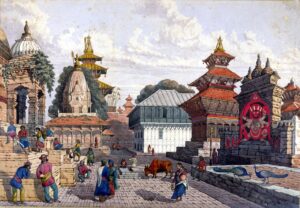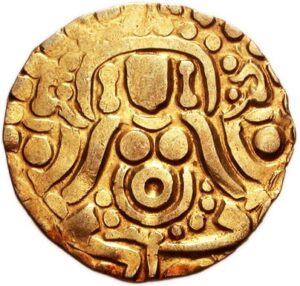The Guptas were a powerful dynasty who ruled most of North India early in the Common Era.
They patronized Jains and Buddhists as well as Hindus.
The famous Buddhist monastic university of Nalanda (a site now in western Pakistan) was founded by the Gupta kings and associates. Other Buddhist sites such as Bodh Gaya and Sanchi also benefited from Gupta attention and largess.
The Gupta rulers were known for their adherence to traditional VEDIC norms in ritual and conduct. While patrons of the heterodox Buddhists and Jains, they were devotionally attached to VISHNU and remained Hindus by faith.
Chandra Gupta I (320–34 C.E.) began the dynasty by consolidating power in the eastern Gangetic heartland.
His successor, Sumudra Gupta (355–76 C.E.), made Pataliputra (now Patna) the center of a great empire reaching from Assam in the east to the Punjab in the west. He took tribute from other kings in the west, notably those of Rajasthan, and conquered much of the eastern Indian coastline down to KANCHIPURAM. Though he withdrew his armies, he remained overlord of southeastern India.
Chandra Gupta II (c. 376–415 C.E.) defeated the western Shaka armies and extended the rule of the empire up to the Indus River, controlling everything to the east. Chandra Gupta II ushered in a new era of cultural magnificence, becoming patron to the great poet KALIDASA and other poets and scholars. He may have had the title Vikramaditya cited by Kalidasa. During his reign the Chinese traveler Fa-shien, a Buddhist, traveled to India to record the wonders of the land. Chandra Gupta’s son, Kumara Gupta I (c. 415–54), was killed in battles defending western India as fierce invaders, the Central Asians known as Hunas, challenged Gupta rule there. Kumara Gupta was known for his worship of SHIVA.
Skanda Gupta (c. 455–67) took power upon Kumara’s death. He fended off the invaders, but Gupta power had begun to weaken. The rest of Gupta rule was spent in fending off attacks from the west. The empire succumbed completely when it lost control of Bengal in 550 C.E.


